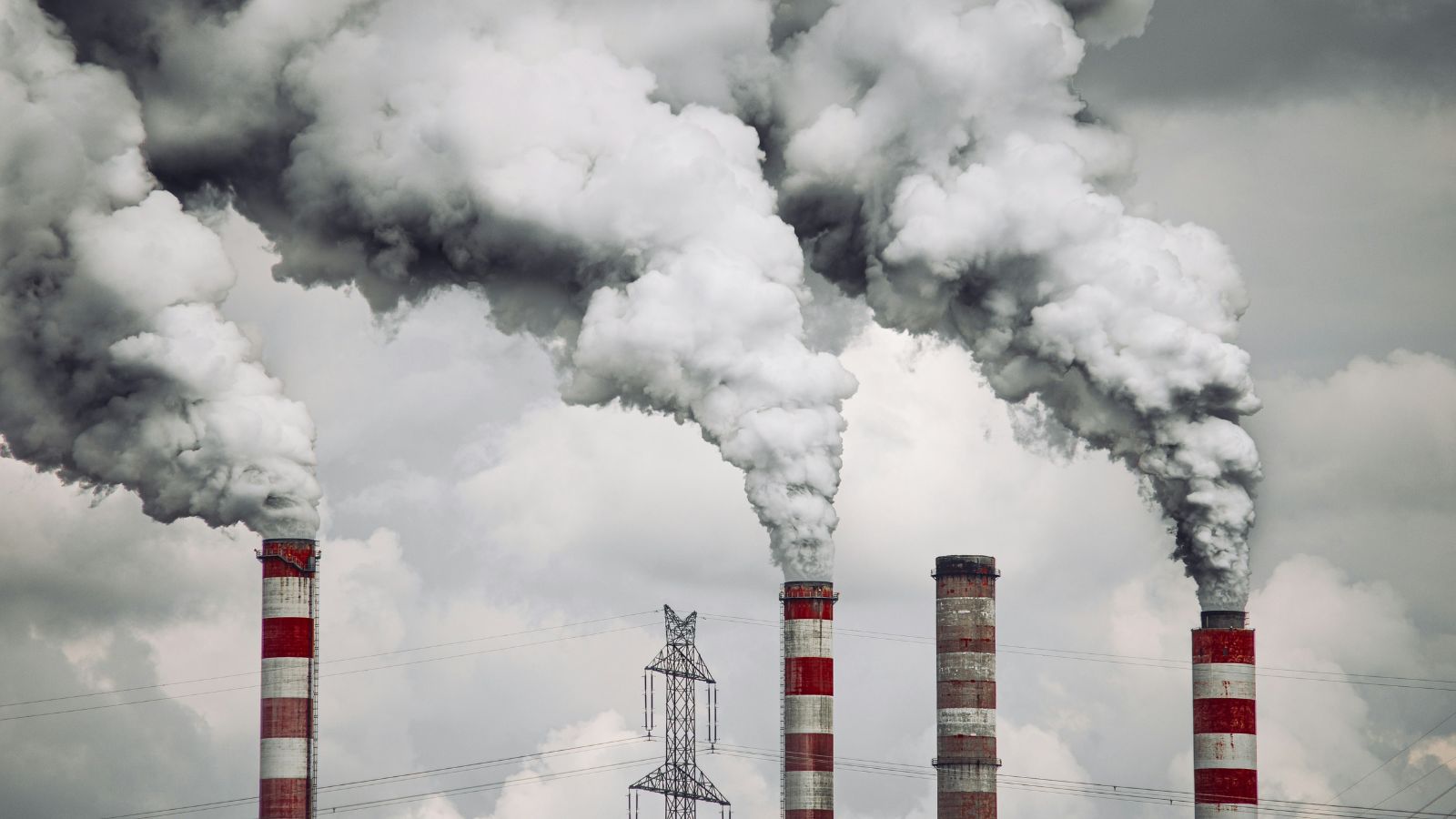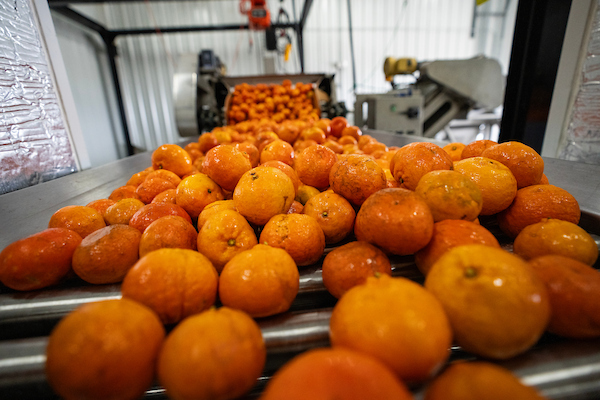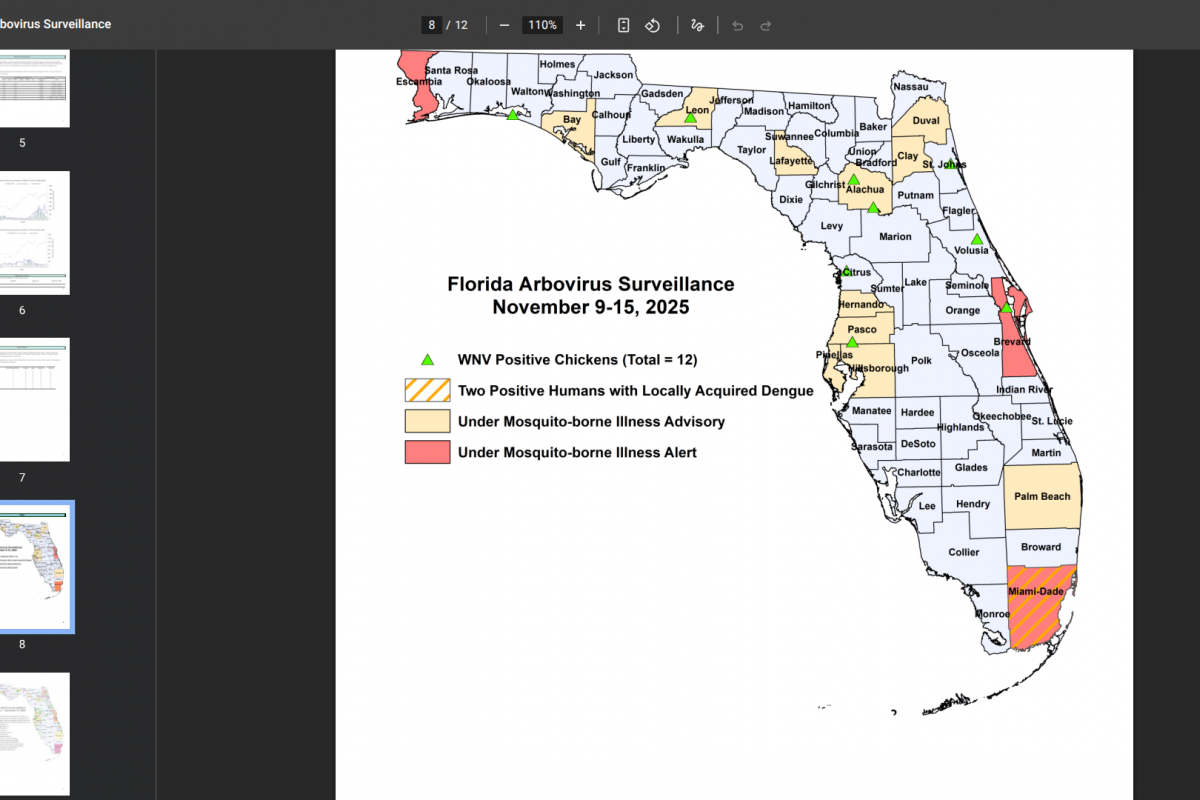11 local stories ideas from the 2025 Lancet Countdown on Health and Climate Change – The Journalist’s Resource

Analysis of the 2025 Lancet Countdown on Health and Climate Change
The ninth annual Lancet Countdown report, a collaboration of 128 experts from 71 institutions, presents a comprehensive assessment of the accelerating health threats posed by climate change. The findings underscore a critical failure to meet Sustainable Development Goals (SDGs), particularly SDG 3 (Good Health and Well-being) and SDG 13 (Climate Action), due to rising global temperatures, record greenhouse gas emissions, and significant policy reversals.
Key Findings and SDG Implications
Escalating Health Crises Linked to Climate Change
The report documents 2024 as the first year global temperatures surpassed the 1.5°C pre-industrial threshold, leading to severe consequences for global health and directly undermining SDG 3.
- Heat-Related Mortality: An estimated 546,000 annual heat-related deaths occurred globally, a 63% increase since the 1990s. This highlights a failure to protect vulnerable populations and achieve targets within SDG 3.
- Air Quality and Respiratory Health: Wildfire smoke was responsible for approximately 11,500 deaths in the U.S. in 2024, a 49% increase from the 2003-2012 average. This trend compromises progress on reducing deaths from air pollution under SDG 3 and SDG 11 (Sustainable Cities and Communities).
- Infectious Disease Proliferation: The potential for dengue transmission increased by up to 48.5% compared to 1951-1960 levels. An additional 364 million people are now at risk of tick-borne diseases, indicating a significant challenge to SDG 3 targets on communicable diseases.
Socioeconomic Impacts and Growing Inequalities
The economic ramifications of climate change exacerbate existing disparities, hindering progress on SDG 8 (Decent Work and Economic Growth) and SDG 10 (Reduced Inequalities).
- Labor and Productivity: In 2024, heat exposure led to the loss of over 3.5 billion potential work hours globally, an 84% increase from the 1990s average. This directly impacts economic security and decent work, central tenets of SDG 8.
- Economic Losses and Insurance Gaps: Global insured losses from natural catastrophes reached $108 billion in 2023, with total economic losses at $280 billion. The insurance protection gap is widest in low- and medium-HDI countries, where only 7% of disaster losses are insured in Africa compared to 57% in North America, deepening inequalities contrary to SDG 10.
- Food and Water Insecurity: In 2024, 61% of the global land area was affected by extreme drought, threatening food and water security and jeopardizing SDG 2 (Zero Hunger) and SDG 6 (Clean Water and Sanitation).
Policy Failures and Governance Challenges
The report notes a reversal of progress on 12 of 20 key metrics assessing climate and health actions. Policy backsliding, particularly in the U.S., including withdrawal from the Paris Agreement and the dismantling of the National Heat Strategy, represents a significant setback for SDG 13 (Climate Action) and SDG 17 (Partnerships for the Goals).
Areas of Progress and Alignment with SDGs
Despite the negative trends, the report identifies positive developments that align with several SDGs.
Growth in Clean Energy and Sustainable Economies
- Renewable Energy Expansion (SDG 7): Modern renewable sources generated a record 12% of electricity in 2022. Global clean energy investment grew to $2.03 trillion in 2024, 69% higher than fossil fuel investment, supporting SDG 7 (Affordable and Clean Energy).
- Green Job Creation (SDG 8): Employment in the renewable energy sector increased by 18.3% in 2023, reaching 16.2 million jobs globally and contributing to sustainable economic growth as outlined in SDG 8.
Health Sector and Adaptation advancements
- Health Sector Emissions Reduction (SDG 12): Greenhouse gas emissions from the health sector decreased by 12% between 2021 and 2022, contributing to more sustainable consumption and production patterns.
- Improved Adaptation and Education (SDG 4 & SDG 13): Globally, adaptation planning is improving. In 2024, 64% of medical students received education on climate and health, fostering a professional workforce equipped to address these challenges, aligning with SDG 4 (Quality Education).
Strategic Focus Areas for Localized Action
To address the report’s findings, localized investigation and action are required across several domains, each corresponding to specific SDGs.
- Workplace Safety Standards: Investigate and enforce heat standards for workers to protect health and ensure decent work conditions (SDG 3, SDG 8).
- Climate Impact on Worker Productivity: Analyze how extreme weather affects livelihoods and economic stability, particularly in sectors like construction and agriculture (SDG 8).
- Insurance and Financial Resilience: Report on the rising costs and decreasing availability of property insurance to address economic vulnerability and inequality (SDG 10, SDG 11).
- Vulnerability and Equity Mapping: Utilize local data on heat, air quality, and tree canopy to identify and support communities at highest risk, promoting equity (SDG 10).
- Chronic Health Threats from Wildfire Smoke: Monitor public health data, including emergency visits and school closures, to manage the recurring threat of wildfire smoke (SDG 3, SDG 11).
- Climate-Sensitive Disease Surveillance: Track the geographic spread and timing of vector-borne diseases to enhance public health preparedness (SDG 3).
- Sub-national Climate Policy and Action: Evaluate the effectiveness of climate and health policies implemented by city, state, and tribal governments to fill national leadership gaps (SDG 11, SDG 13).
- Healthcare System Climate Readiness: Assess the preparedness of local hospitals and clinics for climate-related emergencies, including power outages and patient surges (SDG 3, SDG 9).
- Food and Water Security: Examine the impact of climate extremes on local agriculture, water supplies, and food prices to ensure community resilience (SDG 2, SDG 6).
Analysis of SDGs, Targets, and Indicators
1. Which SDGs are addressed or connected to the issues highlighted in the article?
-
SDG 3: Good Health and Well-being
The article is centered on the Lancet Countdown on Health and Climate Change report, which explicitly links climate change to accelerating health threats. It discusses heat-related deaths, the health impacts of wildfire smoke, the spread of vector-borne diseases like dengue, and the strain on healthcare systems, all of which are core concerns of SDG 3.
-
SDG 8: Decent Work and Economic Growth
The article addresses workplace safety in the context of extreme heat, noting that employers should provide shade, water, and rest breaks. It also quantifies the economic impact of climate change through lost labor productivity, stating that “heat exposure resulted in a loss of more than 3.5 billion potential work hours.” Conversely, it highlights positive economic trends, such as the creation of 16.2 million jobs in the growing renewable energy sector.
-
SDG 10: Reduced Inequalities
The article emphasizes that the impacts of climate change are not evenly distributed. It points out that vulnerable populations bear a disproportionate burden, and it uses the Human Development Index (HDI) to compare impacts. For example, it contrasts the low access to air conditioning in low HDI countries (2%) with that in high HDI countries (48%) and notes the higher percentage of heat-related deaths in low HDI countries.
-
SDG 11: Sustainable Cities and Communities
The article discusses the vulnerability of communities and infrastructure to climate change. It mentions the need for local governments to create heat action plans and emergency response strategies. It also highlights the financial strain on communities from uninsured losses due to natural catastrophes and the pressure on healthcare infrastructure, particularly in coastal cities facing sea-level rise.
-
SDG 13: Climate Action
This is the central theme of the article. It reports on the failure to meet climate targets, with global temperatures exceeding 1.5 degrees Celsius and greenhouse gas emissions rising. It also discusses policy backsliding, such as the U.S. withdrawal from the Paris Agreement, and the importance of National Adaptation Plans to strengthen resilience and adaptive capacity to climate-related hazards.
-
SDG 2: Zero Hunger
The article connects climate extremes to food and water security. It states that a record 61% of global land area was affected by extreme drought in 2024, which “can affect crop productivity, disrupt supply chains…and affect income, further threatening food security.”
-
SDG 7: Affordable and Clean Energy
The article highlights positive developments in the clean energy sector. It notes that “the share of electricity generated by modern renewable sources of energy reached a record 12% in 2022” and that “global clean energy investment grew by 8.7% in 2024 to $2.03 trillion,” which is significantly higher than fossil fuel investment.
2. What specific targets under those SDGs can be identified based on the article’s content?
-
SDG 3: Good Health and Well-being
- Target 3.3: By 2030, end the epidemics of AIDS, tuberculosis, malaria and neglected tropical diseases and combat hepatitis, water-borne diseases and other communicable diseases. The article’s focus on the increased transmission of vector-borne diseases like dengue, which saw a 48.5% increase in transmission potential, directly relates to this target.
- Target 3.9: By 2030, substantially reduce the number of deaths and illnesses from hazardous chemicals and air, water and soil pollution and contamination. The article’s data on deaths from wildfire smoke (11,500 in the U.S.) and the reduction in deaths from particulate matter due to a shift away from coal directly connect to this target.
- Target 3.d: Strengthen the capacity of all countries, in particular developing countries, for early warning, risk reduction and management of national and global health risks. The discussion on the need for local hospitals to have climate readiness plans for weather emergencies and disease outbreaks aligns with this target.
-
SDG 8: Decent Work and Economic Growth
- Target 8.5: By 2030, achieve full and productive employment and decent work for all women and men, including for young people and persons with disabilities, and equal pay for work of equal value. The article points to the loss of “3.5 billion potential work hours” due to heat, affecting productivity, while also highlighting the creation of “16.2 million” jobs in the renewable energy sector, representing a shift in employment opportunities.
- Target 8.8: Protect labour rights and promote safe and secure working environments for all workers, including migrant workers, in particular women migrants, and those in precarious employment. The suggestion for journalists to investigate whether employers “provide shade, water and rest breaks” for workers exposed to extreme heat directly addresses the need for safe working environments.
-
SDG 10: Reduced Inequalities
- Target 10.2: By 2030, empower and promote the social, economic and political inclusion of all, irrespective of age, sex, disability, race, ethnicity, origin, religion or economic or other status. The article highlights the disparity in vulnerability, noting that “heat-related deaths were 1.7% of all deaths in low HDI countries, compared with 0.5% in very high HDI countries,” underscoring the unequal burden of climate change.
-
SDG 11: Sustainable Cities and Communities
- Target 11.5: By 2030, significantly reduce the number of deaths and the number of people affected and substantially decrease the direct economic losses relative to global gross domestic product caused by disasters, including water-related disasters, with a focus on protecting the poor and people in vulnerable situations. The article’s mention of “$108 billion” in global insured losses from natural catastrophes and the total economic losses of “$280 billion” directly relates to measuring the economic impact of disasters.
- Target 11.b: By 2020, substantially increase the number of cities and human settlements adopting and implementing integrated policies and plans towards inclusion, resource efficiency, mitigation and adaptation to climate change, resilience to disasters. The report that “Nearly 97% of the cities that report to CDP…declared having completed or intending to complete climate change risk assessments” is a direct measure of this target.
-
SDG 13: Climate Action
- Target 13.1: Strengthen resilience and adaptive capacity to climate-related hazards and natural disasters in all countries. The article discusses the importance of National Adaptation Plans and local strategies like heat action plans as ways to build resilience.
- Target 13.2: Integrate climate change measures into national policies, strategies and planning. The article critiques the U.S. for rolling back climate policies and withdrawing from the Paris Agreement, which represents a failure to integrate climate measures into national policy.
-
SDG 2: Zero Hunger
- Target 2.4: By 2030, ensure sustainable food production systems and implement resilient agricultural practices that increase productivity and production, that help maintain ecosystems, that strengthen capacity for adaptation to climate change, extreme weather, drought, flooding and other disasters and that progressively improve land and soil quality. The article’s finding that “a record-breaking 61% of the global land area was affected by extreme drought” directly threatens the resilience of agricultural practices mentioned in this target.
-
SDG 7: Affordable and Clean Energy
- Target 7.2: By 2030, increase substantially the share of renewable energy in the global energy mix. The article provides a direct progress metric for this target by stating that “The share of electricity generated by modern renewable sources of energy reached a record 12% in 2022.”
3. Are there any indicators mentioned or implied in the article that can be used to measure progress towards the identified targets?
Yes, the article is rich with quantitative data that can serve as indicators for measuring progress.
-
For SDG 3 (Good Health and Well-being)
- Indicator for Target 3.9: The number of annual heat-related deaths (546,000 globally) and deaths from wildfire smoke (11,500 in the U.S.). The 63% increase in heat-related deaths since the 1990s is a clear indicator of a negative trend.
- Indicator for Target 3.3: The percentage increase in potential dengue transmission (48.5%) and the number of reported dengue cases (7.6 million) serve as indicators for the spread of vector-borne diseases.
-
For SDG 8 (Decent Work and Economic Growth)
- Indicator for Target 8.5: The number of potential work hours lost due to heat exposure (3.5 billion) is an indicator of climate change’s impact on productivity. The number of employees in the renewable energy sector (16.2 million) is an indicator of job creation in the green economy.
-
For SDG 10 (Reduced Inequalities)
- Indicator for Target 10.2: The disparity in access to air conditioning between high and low HDI countries (48% vs. 2%) and the difference in the proportion of heat-related deaths (0.5% vs. 1.7%) are stark indicators of inequality.
-
For SDG 11 (Sustainable Cities and Communities)
- Indicator for Target 11.5: The monetary value of global insured losses from natural catastrophes ($108 billion) and total economic losses ($280 billion) are direct indicators of the financial impact of disasters.
- Indicator for Target 11.b: The percentage of cities reporting the completion of climate change risk assessments (97%) is a direct indicator of planning and adaptation efforts at the municipal level.
-
For SDG 13 (Climate Action)
- Indicator for Target 13.1: The global temperature increase above pre-industrial levels (exceeding 1.5 degrees Celsius) is a primary indicator of the severity of climate change. The number of countries that have submitted a National Adaptation Plan is an indicator of preparedness.
-
For SDG 2 (Zero Hunger)
- Indicator for Target 2.4: The percentage of global land area affected by extreme drought (61%) serves as an indicator of the threat to food and water security.
-
For SDG 7 (Affordable and Clean Energy)
- Indicator for Target 7.2: The share of electricity from renewable sources (12%) and the total investment in clean energy ($2.03 trillion) are direct indicators of the transition to clean energy.
4. Summary Table of SDGs, Targets, and Indicators
| SDGs | Targets | Indicators |
|---|---|---|
| SDG 2: Zero Hunger | 2.4: Ensure sustainable food production systems and resilient agricultural practices. | Percentage of global land area affected by extreme drought (61%). |
| SDG 3: Good Health and Well-being | 3.3: End epidemics of communicable diseases. 3.9: Reduce deaths from pollution. 3.d: Strengthen capacity for health risk management. |
Increase in dengue transmission potential (48.5%); Annual heat-related deaths (546,000); Deaths from wildfire smoke in the U.S. (11,500); Need for hospital climate readiness plans. |
| SDG 7: Affordable and Clean Energy | 7.2: Increase the share of renewable energy. | Share of electricity from renewable sources (12%); Global clean energy investment ($2.03 trillion). |
| SDG 8: Decent Work and Economic Growth | 8.5: Achieve full and productive employment. 8.8: Promote safe working environments. |
Potential work hours lost to heat (3.5 billion); Employment in renewable energy sector (16.2 million); Provision of shade, water, and breaks for workers. |
| SDG 10: Reduced Inequalities | 10.2: Promote universal social and economic inclusion. | Disparity in access to air conditioning (48% in high-HDI vs. 2% in low-HDI countries); Disparity in heat-related death rates (0.5% vs. 1.7%). |
| SDG 11: Sustainable Cities and Communities | 11.5: Reduce deaths and economic losses from disasters. 11.b: Implement policies for climate change adaptation. |
Global insured losses from natural catastrophes ($108 billion); Percentage of cities with climate risk assessments (97%). |
| SDG 13: Climate Action | 13.1: Strengthen resilience and adaptive capacity. 13.2: Integrate climate change into national policies. |
Global temperature increase (exceeded 1.5°C); U.S. withdrawal from Paris Agreement; Development of National Adaptation Plans. |
Source: journalistsresource.org
What is Your Reaction?
 Like
0
Like
0
 Dislike
0
Dislike
0
 Love
0
Love
0
 Funny
0
Funny
0
 Angry
0
Angry
0
 Sad
0
Sad
0
 Wow
0
Wow
0














































































